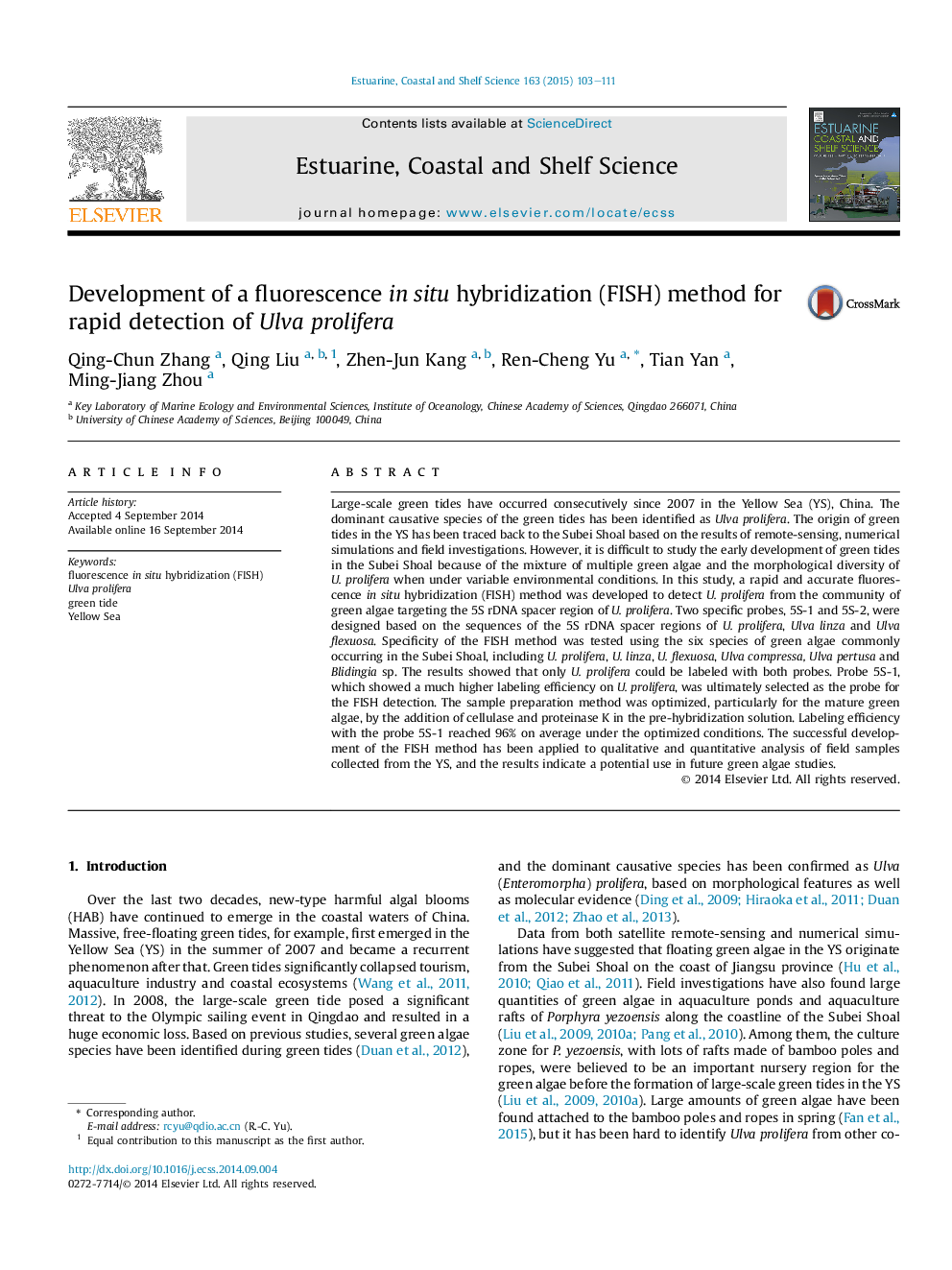| کد مقاله | کد نشریه | سال انتشار | مقاله انگلیسی | نسخه تمام متن |
|---|---|---|---|---|
| 4539437 | 1326598 | 2015 | 9 صفحه PDF | دانلود رایگان |

• A method for rapid detection of Ulva prolifera in the Yellow Sea (YS) was developed.
• Probe on 5S spacer region was used in the fluorescence in situ hybridization method.
• This method could discriminate U. prolifera from other green algal species in the YS.
• Relative abundance of U. prolifera in field samples can be assessed with this method.
• The method is promising in studies on the early development of green tides in the YS.
Large-scale green tides have occurred consecutively since 2007 in the Yellow Sea (YS), China. The dominant causative species of the green tides has been identified as Ulva prolifera. The origin of green tides in the YS has been traced back to the Subei Shoal based on the results of remote-sensing, numerical simulations and field investigations. However, it is difficult to study the early development of green tides in the Subei Shoal because of the mixture of multiple green algae and the morphological diversity of U. prolifera when under variable environmental conditions. In this study, a rapid and accurate fluorescence in situ hybridization (FISH) method was developed to detect U. prolifera from the community of green algae targeting the 5S rDNA spacer region of U. prolifera. Two specific probes, 5S-1 and 5S-2, were designed based on the sequences of the 5S rDNA spacer regions of U. prolifera, Ulva linza and Ulva flexuosa. Specificity of the FISH method was tested using the six species of green algae commonly occurring in the Subei Shoal, including U. prolifera, U. linza, U. flexuosa, Ulva compressa, Ulva pertusa and Blidingia sp. The results showed that only U. prolifera could be labeled with both probes. Probe 5S-1, which showed a much higher labeling efficiency on U. prolifera, was ultimately selected as the probe for the FISH detection. The sample preparation method was optimized, particularly for the mature green algae, by the addition of cellulase and proteinase K in the pre-hybridization solution. Labeling efficiency with the probe 5S-1 reached 96% on average under the optimized conditions. The successful development of the FISH method has been applied to qualitative and quantitative analysis of field samples collected from the YS, and the results indicate a potential use in future green algae studies.
Figure optionsDownload high-quality image (342 K)Download as PowerPoint slide
Journal: Estuarine, Coastal and Shelf Science - Volume 163, Part A, 20 September 2015, Pages 103–111